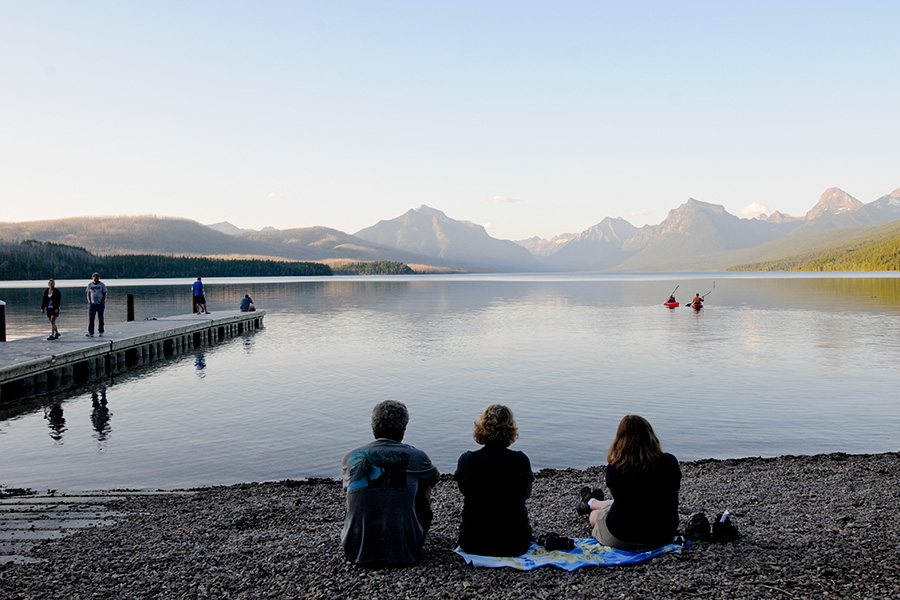Whitefish Debuts Proposal for Tourism Master Plan
With visitation expected to see continued growth, tourism leaders are planning for the future
By Tristan Scott
As tourism continues to chug along as one of Montana’s most powerful economic currents, local leaders are projecting another busy summer in the Flathead Valley, a trend that is forecasted to continue at a steady rate.
Given those future projections and the strains that an uptick in visitation can foist on a community, Whitefish is crafting a plan that guides the future of tourism in a sustainable and coordinated way.
Last month, the Whitefish Convention and Visitors Bureau presented a proposal of its Tourism Master Plan to the Whitefish City Council, describing a creative campaign to draw high-value, low-impact visitors to the community, a concept that aligns with the model traveler to whom city leaders hope to appeal — the geotraveler.
According to the WCVB, geotravelers place a high value on authentic travel experiences that respect and support the local character of place and its environment, and are less inclined to become discouraged in their travel by a dearth of amenities, variable weather or transportation inconveniences.
The Whitefish Tourism Master Plan is currently just a proposal, but if approved it would help analyze gaps, identify opportunities and establish priorities to ensure the tourism industry grows in an economically, socially and environmentally sustainable manner, according to WCVB Executive Director Dylan Boyle.
The plan seizes on three key areas that are central to Whitefish’s appeal, according to the WCVB.
It strives to preserve and enhance the quality of life in Whitefish by making sure “residents are living in a place that feels welcoming and like home, not just a pretty place for visitors.” This step entails creating a vision of the desired qualities for Whitefish and defining what critical assets can help retain or improve the community.
The plan would also aim to improve the economic benefits of tourism by minimizing the impacts of visitors while continuing to promote support for local businesses and encourage economic growth.
This step would help address a basket of issues that have come to bear on cities like Whitefish.
As tourism has grown in Montana and a record number of people visit national parks like Glacier, resort communities like Whitefish have struggled to develop adequate and affordable housing for local residents, such as midlevel managers, business owners, teachers, and police officers who are forced to live miles away or give up their jobs altogether.
More than 617,800 nonresident visitors spent at least one night in Whitefish in 2016, according to the WCVB, and improving the visitor experience by clearly defining the ideal form of tourism in Whitefish is the plan’s final prong.
That includes defining the brand of tourism being promoted and planning for improvements in transportation, air service, parking, and other amenities.
“Whitefish is facing issues right now that are directly related to increased tourism growth (housing, transportation, infrastructure, quality of life),” according to the plan. “These issues not only need immediate resolution but also long-term outlook as it relates to both population growth and visitation growth.”
The plan would also likely define how the tourism industry and the city of Whitefish can better work together to support sustainable growth.
As effective marketing continues to draw more visitors to Whitefish, particularly due to the busy summer and winter seasons, Boyle said ensuring that the infrastructure, quality of life and service matches the brand that the WCVB has embraced, and that the visitors match the community’s values.
Of Whitefish’s visitors, just 25 percent are first-time visitors, meaning the lion’s share are repeat visitors who return to Whitefish and the Flathead Valley because of a certain allure.
“We want to fulfill the promises we’ve made and don’t lose those repeat visitors because they are critical,” Boyle told the city council.
The WCVB’s proposed timeline for presenting a final Tourism Master Plan to the Whitefish City Council is about 18 months out.
Boyle said numerous Montana towns have created downtown master plans that include elements of tourism, but Big Sky is the only community in the state that has pursued a tourism master plan.
An analog to Whitefish’s proposed plan can be found in Vancouver, British Columbia, where the city partnered with its tourism entity to craft a forward-looking plan to ensure that the growth of tourism is sustainable and healthy for the community.
As one of the Flathead Valley’s premier attractions, Whitefish Mountain Resort CEO Dan Graves said the resort is planning for strong visitation this summer as it prepares to open for summer activities. The resort expects to see about 114,000 visits this summer, which is up from last summer’s visitor count of 112,000, Graves said.
The Institute of Tourism and Recreation Research is predicting a 2 percent increase in visitation and expenditures in Montana. Last year, 617,833 nonresident visitors spent at least one night in Whitefish.